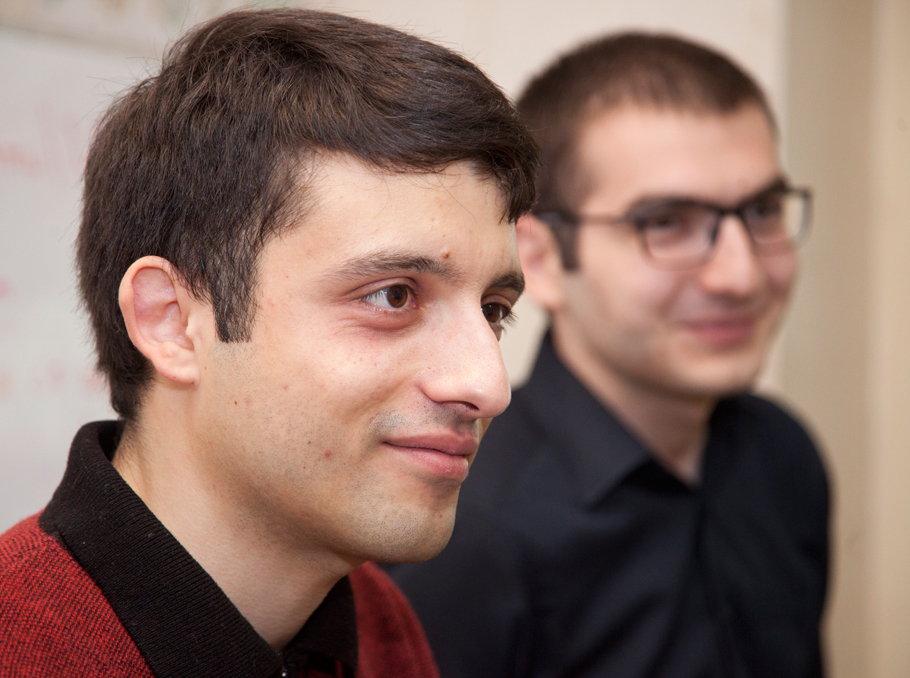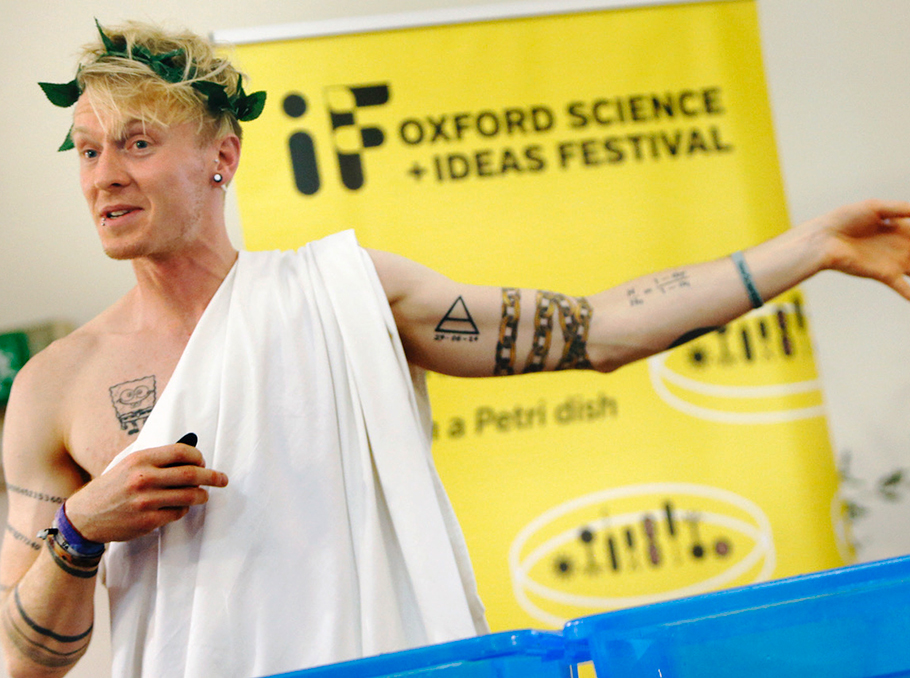Mathematics is the driving force of love, justice, and progress. Mediamax and VOLO launch a joint project, MathArt. It will tell about the talents developing Mathematics in Armenia, and their work.
Mathematics is of key value in the modern world and we hope that MathArt will help attract Armenian youngsters into that particular science.
Thanks to artificial intelligence (AI) it’s possible to predict the mortality risk 48 hours after the patient’s admission to the ICU. At first glance it seems like a scenario of a sci-fi movie, whereas there are a lot of scientific research labs working on it in the world, including the YerevaNN research lab.
YerevaNN: bringing minds together over machine learning
YerevaNN scientific educational lab was founded in 2016 by a post-graduate student of the Faculty of Informatics and Applied Mathematics of the Yerevan State University Hrant Khachatryan. Initially he was more interested in informatics but after a while his focus shifted to mathematics, and years later the idea of YerevaNN research lab was born. The lab aims to promote machine learning research in Armenia.
“While studying at the University we saw that the students were interested in artificial intelligence, however this discipline was not being taught. We realized that we needed a new platform where the students would be able to explore it professionally,” the head of the lab Hrant Khachatryan says adding that from time to time 4 members of YerevaNN meet with students and conduct lectures.
 Hrant Khachatryan
Hrant KhachatryanPhoto: Mediamax
To fund the lab they have set up a foundation whose board members are: the cofounder of Teamable Vazgen Hakobjanyan, the founder of Fimetech Gor Vardanyan and the founder of Arminova Technologies Rouben Meschyan. YerevaNN is a non-profit foundation funded by private donations and research grants, with the aim to cooperate with other scientific centers.
Deep learning algorithms: global examples
Machine learning, for example machine translation, is widely used in the world.
“We input a lot of sentences which have been translated beforehand by professional translators, and based on these examples machine learning algorithms can “learn” the patterns and use them for other sentences. The quality largely depends on the number of examples input in the program. In particular, the low quality of English-Armenian automatic machine translation programs is mainly conditioned by the small number of translated examples,” says Hrant Khachatryan.
 Members of YerevaNN lab
Members of YerevaNN labPhoto: Mediamax
In recent years the sphere of machine learning has rapidly developed due to deep learning algorithms, which have come to solve a lot of complex problems in last 5 years.
Today, through deep learning Facebook automatically recognizes people’s faces and images on photos. Blind users use it to “hear” images on pictures. Through deep learning Tesla cars are able to drive safely and avoid accidents.
Machine learning and healthcare
One of the most important directions in machine learning is the sphere of healthcare. According to Hrant Khachatryan, there are a lot of medical problems that can be successfully solved through machine learning methods. It helps researchers analyze medical data to treat diseases, for example, identify a tumor on a tomogram, make prognosis based on patients’ data.

Photo: Mediamax
The main obstacle for using machine learning in healthcare is data inaccessibility. According to Hrant, all large medical institutions have large databases about their patients but researchers don’t have access to them. Data can be obtained under a special contract only, but machine learning becomes a success when the database is accessible to different scientific laboratories.
YerevaNN’s first fruits: mortality prediction
YerevaNN lab currently cooperates with the University of South California on the basis of MIMIC-III dataset of Massachusetts Institute of Technology. It comprises deidentified health data associated with over 40,000 critical care patients and includes demographics, vital signs, laboratory tests, medications, and more.
“Our goal is to outline a number of problems based on this huge database which is very important for doctors and hospitals, as well as create benchmarks, i.e. set clear-cut criteria to evaluate the solution of mentioned problems. Thus, various researchers will be able to work using the same criteria and process the results of other researchers,” Hrant Khachatryan says.
Currently, YerevaNN is focused on building a multitask learning benchmark dataset that includes four key inpatient clinical prediction tasks that map onto core machine learning problems:
1. Mortality prediction 48 hours after the patient’s admission to ICU.
2. Mortality risk prediction once in an hour (48 hours after the patient’s admission to ICU).
3. Forecasting the length of stay in the ICU once in an hour; this is very important for the hospital in terms of their resources.
4. Predicting diagnosis based on ICU data - body temperature, blood pressure, blood tests - (25 diseases are outlined).
Using YerevaNN’s program every researcher can single out data necessary for these 4 problems from the MIMIC III database and try out different algorithms.
“Besides this program, we have also created algorithms based on deep learning methods to solve all these problems with some level of accuracy. In particular, we have reached high-level accuracy in terms of mortality prediction based on 48-hour data and diagnosis of several diseases. Models predicting the length of stay in the ICU do not work so well. We expect other researchers to create their algorithms within a couple of months and compare them with our models,” he says.
 Members of YerevaNN lab
Members of YerevaNN labPhoto: Mediamax
According to Hrant, jointly learning multiple tasks on the same time series data helps to improve prediction accuracy as compared to the single task baselines. Solving one problem seems to help solving the others. GoogleBrain researchers demonstrated that the quality of the English-German translation program increases when, besides translating, it also learns to make the grammatical analysis of the sentence. The lab has tried to do the same with clinical data.
“Most of the work has been carried out by the member of YerevaNN, post-graduate student of YSU Faculty of Informatics and Applied Mathematics Hrayr Khachatryan. He has developed a model based on deep learning which simultaneously learns to solve all 4 set problems. It turned out that this “multi-task” mechanism better solves the mortality prediction problem than the programs based on mortality prediction only,” says Hrant Khachatryan.
 Members of YerevaNN lab
Members of YerevaNN labPhoto: Mediamax
The initial version of the article describing this work, co-authored by researchers from the University of South California David Kale and Aram Galstyan, is available at arxiv.org.
“We have informed various researchers focusing on machine learning in healthcare about our work. The feedback has been positive so far. Everyone agrees that such benchmarks in healthcare have been needed and a long time coming,” says Hrant Khachatryan.
The Armenian future of artificial intelligence
As Hrant Khachatryan says, machine learning is a rapidly developing sphere. The scientific world has always been interested in creating intelligence, trying to find out how the human brain works, whether it’s possible to have the same in the computer. The economic factor should be also considered. Various industrial companies, different sectors of the economy, such as internet giants, benefit from this sector. They are quickly making use of all the possibilities. These technologies are gradually spreading to other sectors as well, such as healthcare, agriculture, robotics, finance and military. There is a huge global demand for professionals interested in machine learning and Armenia has a big potential to provide them.
Marie Taryan
VOLO is the general partner of the project 



























Comments
Dear visitors, You can place your opinion on the material using your Facebook account. Please, be polite and follow our simple rules: you are not allowed to make off - topic comments, place advertisements, use abusive and filthy language. The editorial staff reserves the right to moderate and delete comments in case of breach of the rules.